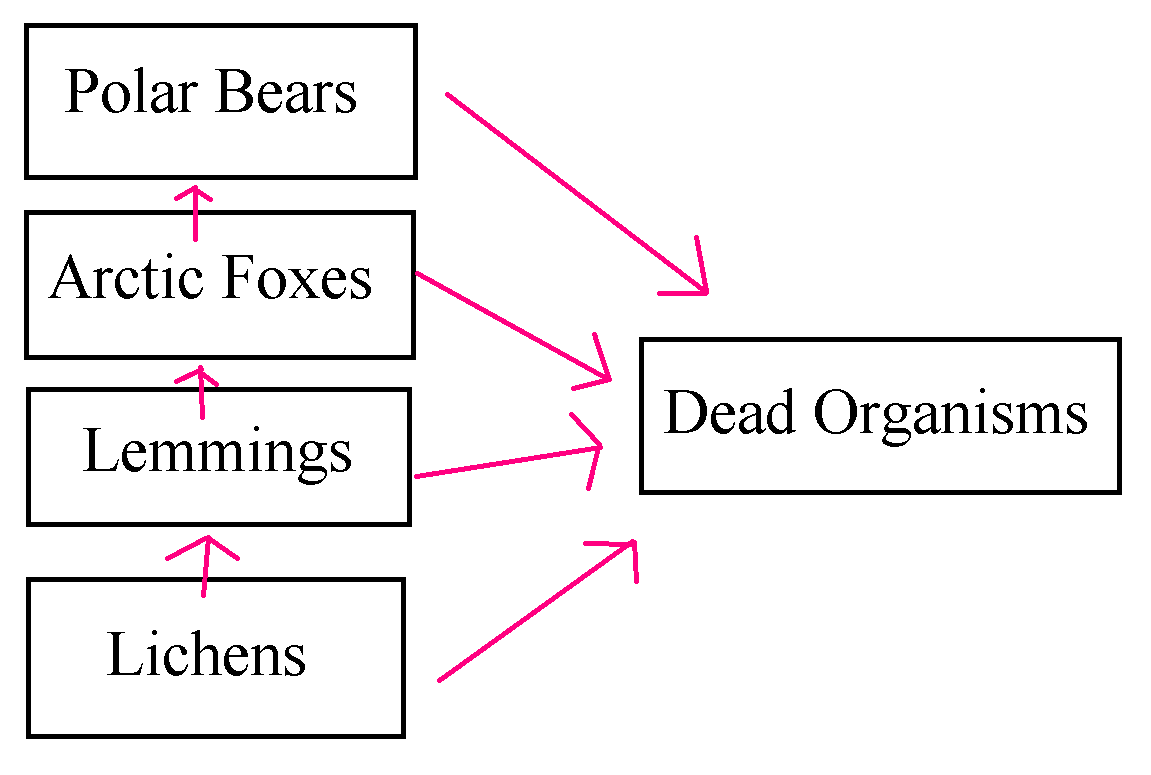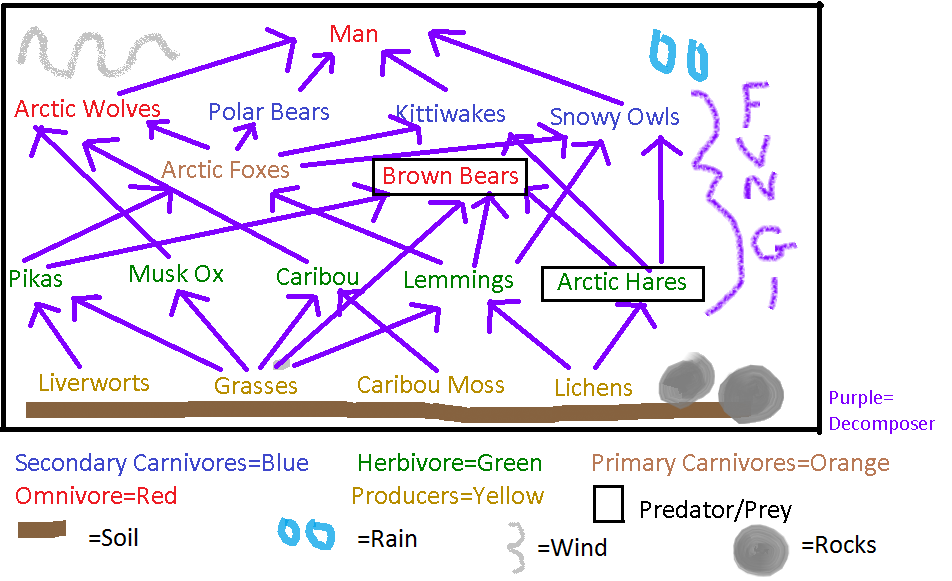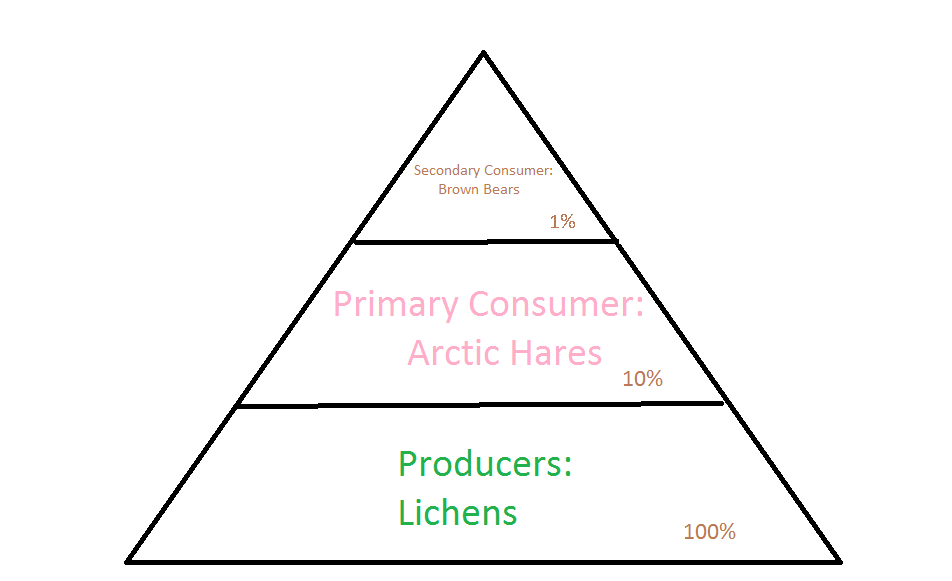   |
Food Chain The relationship of the animals in my food chain are quite alike. Lichens are eaten by lemmings, which are then eaten by arctic foxes, and then finally eaten by polar bears. All of these animals become dead organisms at one time or another. The energy transfered to the organism that is doing the eating. Food Web The arrows in this food web are pointing to the organism that is doing the eating. The energy starts with the producers (organism that makes their energy), moving the the herbivores (plant eaters), to the carnivores (meat eaters), and then finally to omnivores (both plant and meat eaters.) In a predator (the animal doing the hunting)/prey (the animal being hunted) relationship, when the brown bear population is low, the arctic hare population has a chance to grow bigger. When the brown bear population is high, the arctic hares is low. It is a continuous cycle. Also, inavasive species can be quite harmful to the enviornment and native species of this biome. The inavasive species no longer has to worry about their previous predators and diseases, so they are more likely to grow bigger and outnumber the other native species. The can also eat things in the environment that are usually not eaten since they are a different species. Density dependent factors such as a predator can affect the population growth by killing many different organisms. Density independent factors such as oxygen supply can kill organisms that need oxygen if not enough is available. Energy Pyramid In the energy pyramid, 90% of the total energy is lost in every level. So the top level should be 1%. Energy is lost because it is used or released as heat. |